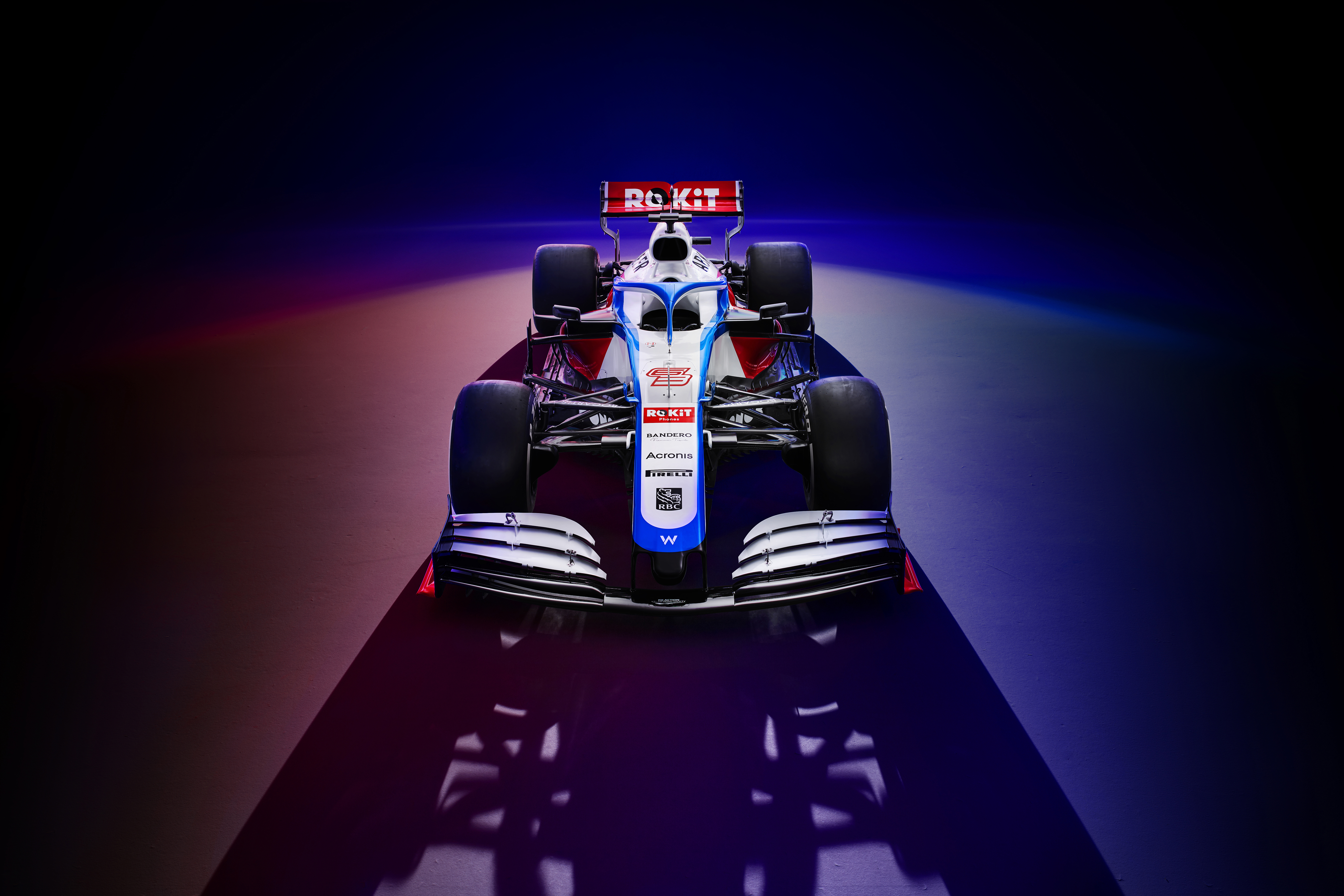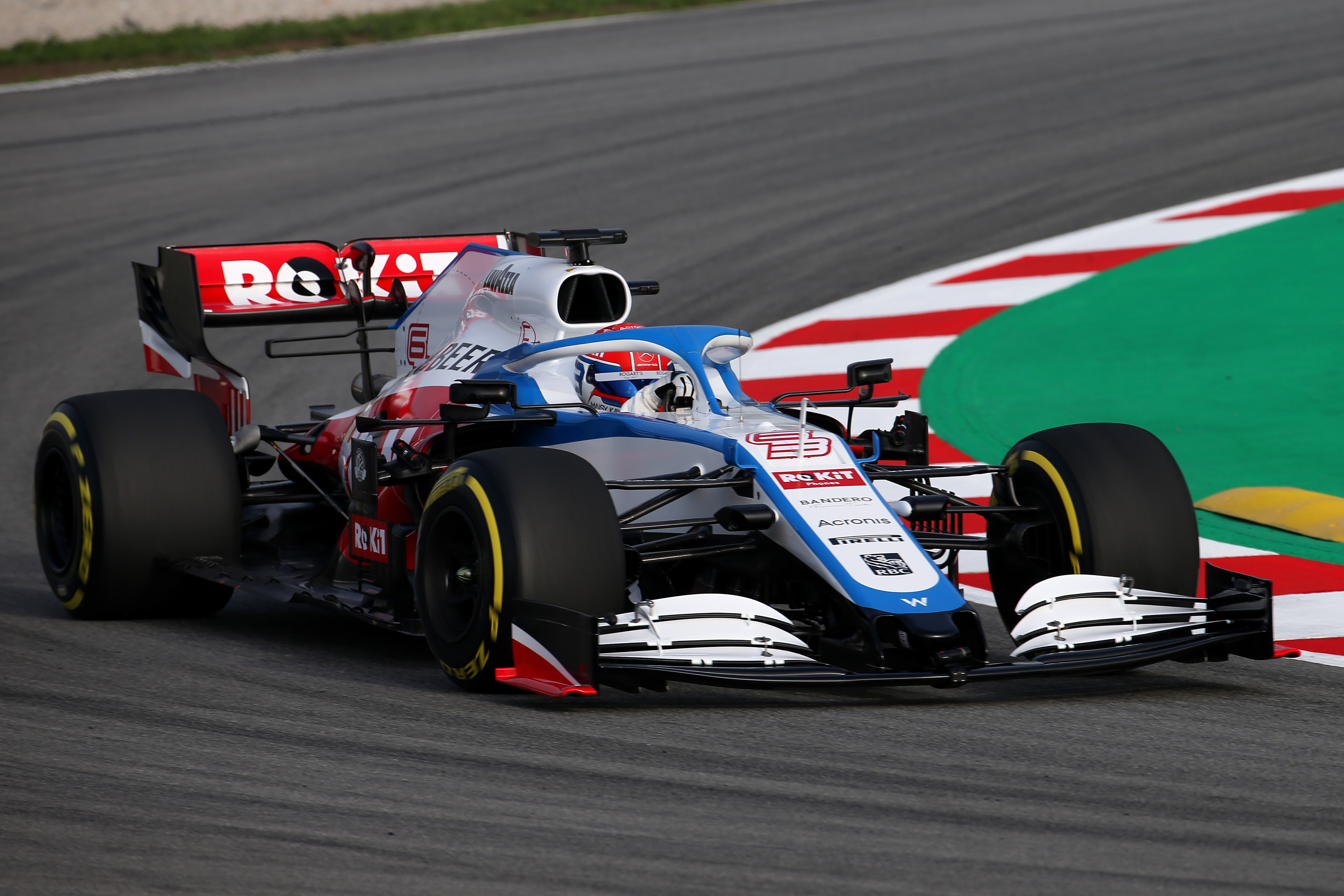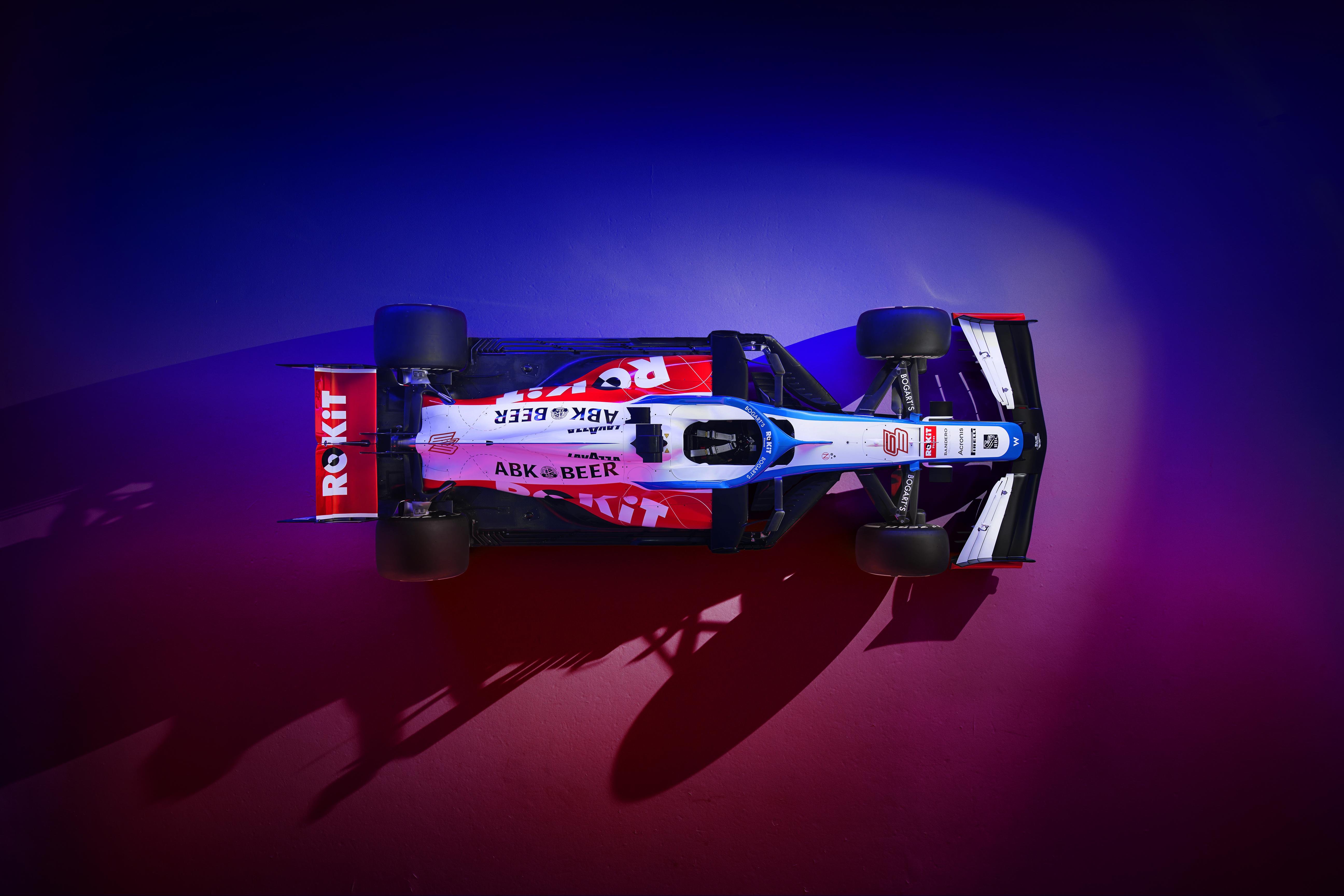Up Next

Williams needs to make a big improvement after a terrible 2019 Formula 1 season, but the new FW43 does not seem to be a big enough step.
It’s more of a new paint job with a few fundamental changes. It still looks like a car from the start of last year or maybe even the year before in terms of the design.
Others have moved forward but Williams hasn’t joined the same club the others have in terms of converging concepts.
Looking at the car, I can’t see enough to say Williams has gone forward dramatically in terms of the aerodynamic surfaces or the concept.
But last year the car was heavy and that had a negative impact and it also had braking problems – if there is a bit of weight saving that could make a big difference. Just 10kg costs you three tenths of a second so that could be ‘invisible’ time gain. I’d still like to see more changes in other areas, though.
The nose is a good example of that. All of the other cars have a nose that ends up narrower than if you take it straight off the front of the chassis. The front end is important in setting up the airflow but relative to others Williams’s just looks like it’s too much blockage.

Perhaps Williams has a ‘real’ 2020 nose sat in the truck waiting to run in testing proper? It looks like it will need it.
The front wing is also a bolt-on component. But we have been talking about the compromise between loaded inboard and outboard and Williams appears to be hedging its bets. I’m not a fan of the design with the outboard part effectively separated from the inboard.
The outboard end swoops down trying to get a good airflow outside the front tyre, but if you have one part that when adjusted drops down and the other stays in its original position that can cause problems.
What I’m seeing at the moment is a car that has been designed for a team that doesn’t have a big budget
For those with a clear direction of what they want the airflow will be uniform across the front wing and therefore uniform when you change its angle. But dropping the outboard side gives a strange airflow because effectively you have a division between the two halves that gives you a lot more transient flow.
The front and rear suspension geometry looks similar to last year. There’s a bit of detail work on the front top wishbones because they had some problems with that ahead of last season in terms of legality. It picks up a little lower where it joins the chassis, especially the front leg. If it’s only the front leg then this will have an influence on the anti-dive.

Anti-dive can have a serious effect on how the drivers feel the car under braking. Too much and there is no feeling, too little and there is too much car movement – which compromises the aerodynamic stability. Compromise is the buzzword here.
Looking at the sidepods and Coke bottle area, it is a little more closely packaged than last year but there’s not a step change here. Williams has changed where the sidepods run along the engine sides and sweeps down faster across the back of the radiator.
The Coke bottle has the undercut to allow the airflow on top of the floor to be pulled over the diffuser surface. The airflow exits from the radiators and is contained in the bulbous proportion above that undercut.
I’ve never really liked the approach where the bodywork curves back out again to create a bigger low-pressure area behind the sidepods. You should be able to create that effect with just the transition through the inner surfaces of the gearbox and internal bodywork without changes that affect the outside surfaces.
Williams hasn’t really moved with the times and if I was there I’d be looking closely at the Mercedes and trying to pursue more of its philosophy, after all Williams uses the Mercedes engines so the cooling package could be identical.
I’m pretty sure that Mercedes wouldn’t be against giving Williams a little advice – after all it does run Mercedes junior George Russell so it would be in both teams’ interest to work closer together.
If Williams has really identified its problems and built good correlation between what it is trying to achieve and what it does achieve then that is encouraging.

But it’s very important that when you put new bits on the car that you expect to improve things that it does have that effect. If not, you won’t get anywhere.
The team’s situation can’t keep going on like this, especially given the financial impact of being at the back.
Perhaps this relatively conservative evolution shows how big a problem that is. If you look at the details you can change – things like the rollbar detail – nothing much in the fundamental structure has changed. It looks like last year’s car tidied up with some new clothes.
Williams needs to find its feet but what I’m seeing at the moment is a car that has been designed for a team that doesn’t have a big budget. Yes, 2021 is looming but you can’t go into a new year after two bad seasons thinking it can’t improve.
The car looks a year or two behind everyone else in terms of the detail work and that’s a worrying sign.
Maybe it could be focusing on 2021 but I’d worry about the impact of that. Not only does it impact prize money earned this year but how do you motivate your team and drivers with another season of eating humble pie? That can lead to doom and gloom.
It looks like another year of keeping going for Williams but nothing more, I’m sorry to say.
The car has all of the fundamentals and the basics are there, but it’s just too basic. I’m just not convinced Williams has caught up with current thinking.



